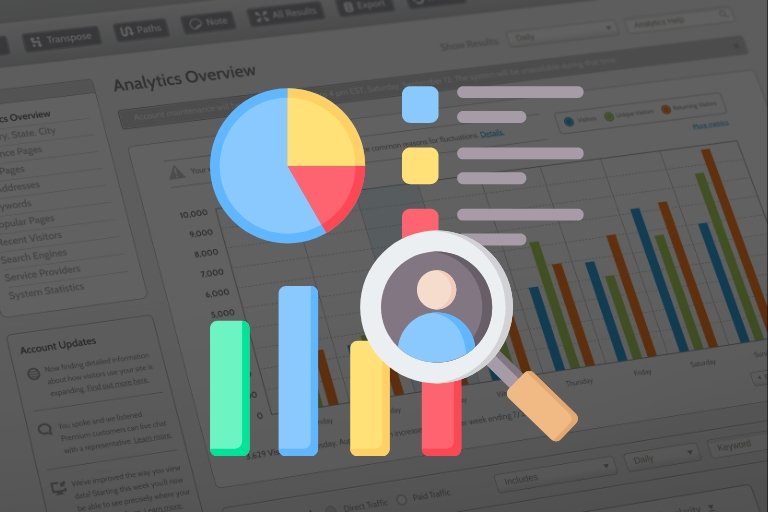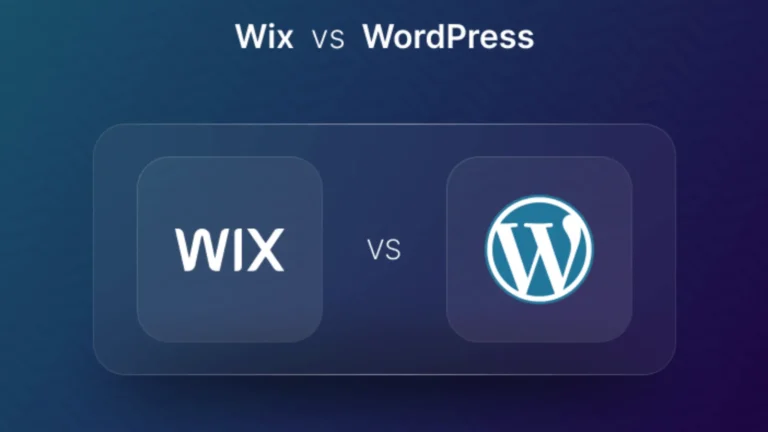Have you ever heard of SEO Google Analytics? Everyone in the marketing game uses Google Analytics, but not all know the intricacies of using Google Analytics for SEO.
So you have successfully kept pace with effective SEO methods, complementing Google’s crawling and search patterns. Congrats! But are you putting enough effort into doing a consistent and well-timed SEO rankings check? No? Thought so. Only plotting and implementing “one size fits all” white-hat SEO activities won’t get you desired results; you require additional efforts as well to support your top SEO rankings stability & improvement.
Performing SEO ranking tracking is compulsory if you want to attain or stay intact on Google’s first page’s top results. This tracking process will help to highlight the factors that aren’t working anymore and give scope to analyze new measures before your business completely zones out from the initial search pages.
So the real question is: Which is the best & free tool for SEO ranking & on-site metrics tracking? The answer is “Google Analytics (GA).
The other real question is: How does using Google Analytics for SEO help track SEO performance? Google Analytics is an effective tool for on-site metrics monitoring, as it contains valuable data that gives a complete dissection of your SEO activities – from analyzing the SEO ranking for keywords to distilling the organic page views, bounce rates, and much more important stuff.
In the following blog, we will refine the critical factors you need to consider to track the SEO rankings of your website using Google Analytics for SEO. Take your reading glasses along and sit comfortably because it will be a long but worthy read.
Link Your Google Analytics With A Search Console Account
By linking your Google Analytics account with the Search console account, you will quickly identify the keywords that people are using to search your content, what content they are interested in looking for, and where that content is ranking in the SERPs.
This linking will bring a clear picture to you – giving scope to improve your target keywords and optimize the pages you want to rank on those target keywords.
After gaining insights into keywords and content rankings, you will easily take the steps that will help you rank on top of Google’s first page.
Search For Your Most Popular Content And Regularly Update Them
Another way to track and improve your SEO rankings would be to run a report to analyze your top-performing content pieces. Chalk out a plan on how you can optimize such content pieces for broader reach.
With this web analytics service (Google Analytics), you can easily track the performance of every page. You will be able to track the total page views, retention time on each page, and internal links that got the most clicks, All these metrics will help you analyze which content needs your dedicated time to bring in the new optimization/updates.
Few things that you can do to further optimize your top-performing content:
Update them with the additional resourceful & updated information
Put the keywords you didn’t inscribe earlier
Put more convincing CTAs (call-to-action) statements throughout the content
Doing all this will help your content in maintaining the top position in the SERPs.
Track Search Terms People Are Using To Find You
The biggest drawback with Google Analytics is – the keyword field is not provided here. So here, it gets tough to combine the keyword list that people are using to find you.
But if you happen to have a URL and on-page SEO implementations, you can somehow identify the landing pages people are heading to right after doing their Google searches. So this landing page identification will help you jot down the search terms or keywords your visitors are most likely using to find you.
But if you want an exact compilation of keywords or search terms that people are using to find you, you can use an additional comprehensive SEO tool like “Keyword Hero”. This tool will integrate well with your GA account and will fetch the required data from it, to collate a list of the most searched keywords for your every organic session.
Find The Category Google Is Putting In Your Business Website
For Google, your website’s category is very important, because the search engine is only interested in ranking a website in the #1 position that’s sure of its niche or business category.
Google Analytics can easily help you identify the interest category of your site users. By getting the list of categories, you can opt for the common categories that define your business. This category list will further help you resurrect your content game and improve your E.A.T ( Expertise, Authoritativeness, and Trustworthiness) score, which is a subset under Google Search Quality Guidelines.
How to view the user-interested category list in my Google Analytics account?
Go to the “Audience” section on your GA dashboard
In the “Audience’ section, select “Interests”
Inside “Interests”, select “Overview”
There you will have a list of – Affinity category, In-market segment, and other categories.
With this user-interested categories data, you will be able to plan your content marketing game head-on.
Look At Your Content Drilldown Section
To make your mission “SEO rankings check” successful, you can utilize the GA’s Content Drill down section. This section will chalk out a brief taxonomy of your site’s structure, and the type of people who are interacting with your website.
The section will give you a detailed report, defining the following:
- Pageviews your URL is getting
- Bounce rate
- Each session’s exit rate
- Retention rate on every page
- Sections of the site that are working
- Duplicate content
- By having all these above real-time pieces of information, you will pull off successful SEO ranking tracking to improve the factors causing poor rankings.
Use Referrals Feature In Google Analytics
The referral feature in Google Analytics shows you the compilation of other third-party sites that referred visitors to your site by clicking on a link featured on third-party websites.
If you are strongly playing with off-page SEO activities, it becomes important for you to know which websites are helping you with great link building to further improve your website’s performance.
How to view “Referral sites” in your Google Analytics account?
- In your GA dashboard, Go to the “Acquisition” section
- Under “Acquisition”, select “All Traffic”
- Inside “All Traffic”, you will find “Referrals”
- Inside referrals, you will find the list of third-party websites that refer visitors to your website.
- The referral report you will see will show you – session volume, Average session duration, the volume of traffic, engagement, and conversion data which will help you evaluate the current performance of the website.
Use Your GA Account To Manage Your PPC Spendings
GA is a proven tool to support your PPC data. By using GA, you can easily test for the keywords that are or aren’t likely to convert into sales.
By closely evaluating the surely converting search terms, you will be sure of which keywords deserve your precious dollar spending.
Since most of the paid advertising returns come from the Google platform, the GA platform will work wonders in accessing the right keywords that are worthy of your investments for the next PPC ad run.
Keep “Custom Alerts” Mode On
Google Analytics Custom Alert can help you stay afloat in the SEO rankings game.
You can set up custom trigger alerts in your account like “If website traffic falls by 7% and bounce rate increases by 8%”.
And these custom alerts will shoot down in your mailbox, after their real onset – to keep you aware of the alarming situations.
Check The Pages With High “Bounce Rates”
Google doesn’t take bounce rates into account while enlisting ranking factors. But bounce rates are the indirect indicators that stop your website from winning that massive traffic base and rankings.
So the bounce rate is somewhere a predominant factor that defines the number of people who have visited your website for a few seconds or minutes but left the session without taking the next-best step.
The reason why the bounce rate is important is that it defines the quality of traffic and the page. If people are hurriedly jumping back to the search engine after having a deep glimpse of your landing page, this means they haven’t found the information searched over certain, to be relevant.
So, you definitely can’t ignore each page’s bounce rate. With these realistic bounce rate percentages, you will know which page needs a more stringent optimization process.
Analyze What People Are Finding Inside Your Internal Site Search Bar
Every website these days has an internal site search bar option where end-users put certain keywords to find the desired information – from the whole website.
On using your website’s internal site search option, users are likely to encounter the following two conditions:
- The first condition – On putting the desired keyword inside the internal search feature, they get directed to the relevant page.
- The second condition – On putting the desired keyword inside the internal search feature, users encounter a message “oops, cannot find page matching to your search terms”.
- Whatever the condition may be, wouldn’t you want to know the search terms that people are actively searching for inside your website? Of course, you do!
In your GA account, on clicking upon – Behavior> Site Search > Overview, you will land up on a list of search terms people are searching inside your website.
Finding the internal site search terms will help in:
Analyzing the information, users are willingly asking
If your website doesn’t host pages similar to those search terms, there you will have a greater chance to create that information page before your competitors – to improve your SEO ranking for keywords users are looking for.
Don’t Miss Out On Mobile Traffic
Google is clear about ranking the websites based on mobile interfaces rather than desktop ones. Your GA account has insights into your mobile traffic as well.
In your GA account, click on Audience> Mobile> Overview. There you will get a dataset explaining how many people are visiting your website using mobile phones, desktops, or tablets.
The dataset will help you analyze the metrics like bounce rates, user sessions, and traffic rates specifically on mobile devices. There you will be able to analyze and improve the factors that are stopping your website from becoming mobile-friendly.
Look Out For Your Top-Performing Landing Pages
Tracking your landing pages is essential for SEO ranking checks and SEO Google Analytics. The top landing page data will help you determine the page views, bounce rate, and conversion rates.
On finding your top landing pages and optimizing them with the following will help in improving your ranking game:
- Making them readable and user-centric
- Putting in the effective CTAs and conversion elements
- Keeping them well-tuned with Google’s updated algorithms
The dataset of top landing pages will help you identify the content type that people are most looking for. With this, you can easily tweak and set your content strategy on the basis of your most visited landing pages.
Know what metrics you must evaluate via SEO Google Analytics to track your SEO ranking correctly!
Six Important SEO ranking metrics
The SEO efforts are greatly dependent on the following metrics. If these metrics aren’t alright, there will be a high chance of losing desired search engine visibility.
1. User Dwell Time
Knowing the dwell time lets you easily identify which page attracts users’ attention. If some page has less dwell time, you will have scope to optimize that page with the right resources to increase the chances of ranking highly in the SERPs.
Pro Tip: Use engaging multimedia elements like interactive graphics, videos, and infographics within your web pages. The more engaging the content the more the user dwells on it. Get help from an SEO specialist if you need help executing the desired SEO-friendly content.
2. Bounce Rate
Tracking the website’s bounce rate defines how useful your users find your website to be. So what is the percentage of the alarming bounce rate? A bad bounce rate can be too high or too low. If your bounce rate is 0%, chances are your GA cannot record any, and if your bounce rate is 80%, it makes sense that either the user experience/interface is disturbing or the content users expected to find wasn’t there.
Thus, by having the bounce rate numbers by your side, you will know which landing page needs rigorous optimization and modifications to bring in ongoing engagement.
If you feel the content could be the reason, update it. If you feel the web layout is unappealing, try redesigning the website.
Pro Tip: Provide high-quality and relevant content. Make sure your story matches what people search for on the internet and gives helpful, engaging, and complete details that make visitors stay longer. Adding pictures and videos, links to similar content within the site, and a straightforward layout can help keep visitors on your page longer. You can easily get SEO services from a good SEO company, including content services.
3. Website Loading speed
Make sure to notice your website’s speed at a timely interval, as this in most cases is the direct cause of poor traffic and conversions. People like websites that load faster and don’t take an eternity to load their individual pages.
Over your GA account, you can visit Behavior>Site Speed>Page timings, this information will give you a brief idea of components that are taking up heavy space and resulting in loading speed.
There you will know which image needs compression, and which element needs rework to minimize its huge spacing over the website.
Knowing what pages are falling behind in the fast-loading race can help in streamlining the SEO goals and track SEO rankings with ease.
Pro Tip: Make sure images are sized right and in a suitable format. Compressing images while keeping their quality high is crucial to website speed. If website speed becomes a constant problem, get professional SEO services to deal with it at as soon as possible for a better loading speed.
4. Mobile Traffic
With Google rolling out its mobile-first indexing in 2008, the need for tracking mobile traffic and experiences became a more serious business for website owners.
Since we are driving in a mobile-first generation, tracking and monitoring your website viewing over mobiles will directly contribute to positive search engine rankings.
Pro Tip: Ensure swift loading times, streamlined content, and responsive design to significantly enhance user experience, which makes a website mobile-friendly. Any good SEO company can help you make your website mobile friendly thus helping you rank higher on SERPs.
5. Organic Conversion Rate
The struggle you pulled off to rank high in the SERP is ultimately for the “Conversions”. You carefully need to access your websites elements that helped you bring in the right and heavy conversions.
There is no rule of thumb defining – what should be the percentage of conversions. It’s simple, that conversions should only go up every month. Declining conversions signifies you are doing miserably. Comparing the converting pages with the non-converting ones will help you highlight the trends and reasons for low conversions.
Pro Tip: Have easy-to-find information with clear call-to-action (CTAs) and quick loading times so users can enjoy everything smoothly (and not get frustrated). When you offer a top-notch experience to users, they will spend more time on your site and even become customers. A best SEO company will also offer conversion rate optimization and will leave no stone unturned to increase organic conversions.
6. Retention Time On Each Page
By knowing the average time of users on a page, you will have clarity on how engaged your visitors are with your website and its internal pages. From the expert’s point, if the average time on page is less than 2 minutes, that means your page needs more improvements and optimizations to make it valuable for your visitors.
Pro Tip: Use videos and engaging and interactive content and elements to keep users engaged. The more interactive the website, the more the retention time increases. With the help of an SEO consultant you can get a highly interactive website with an intuitive design.




